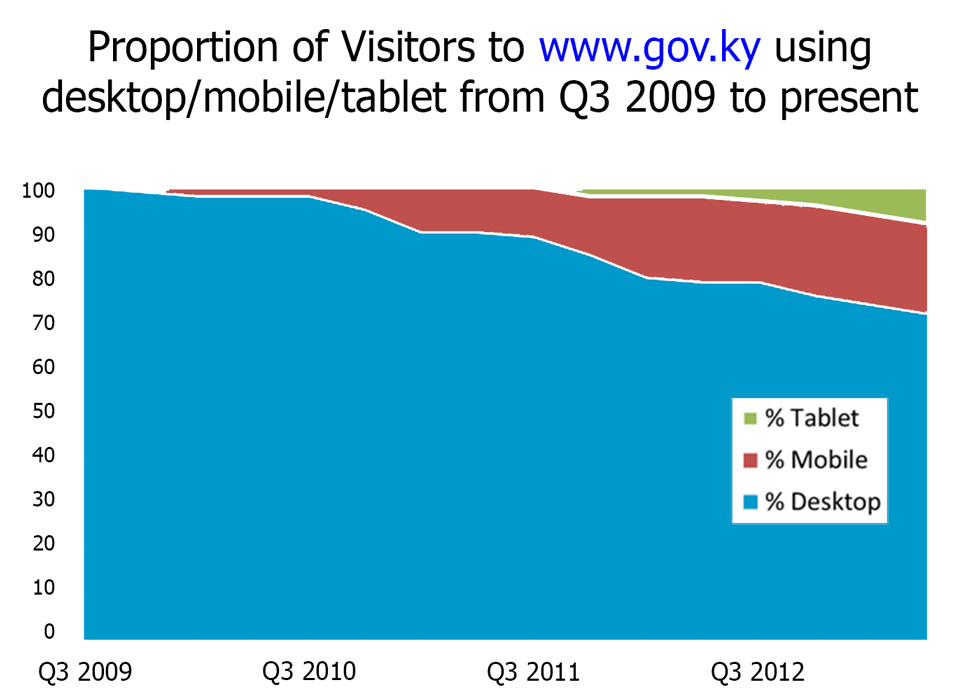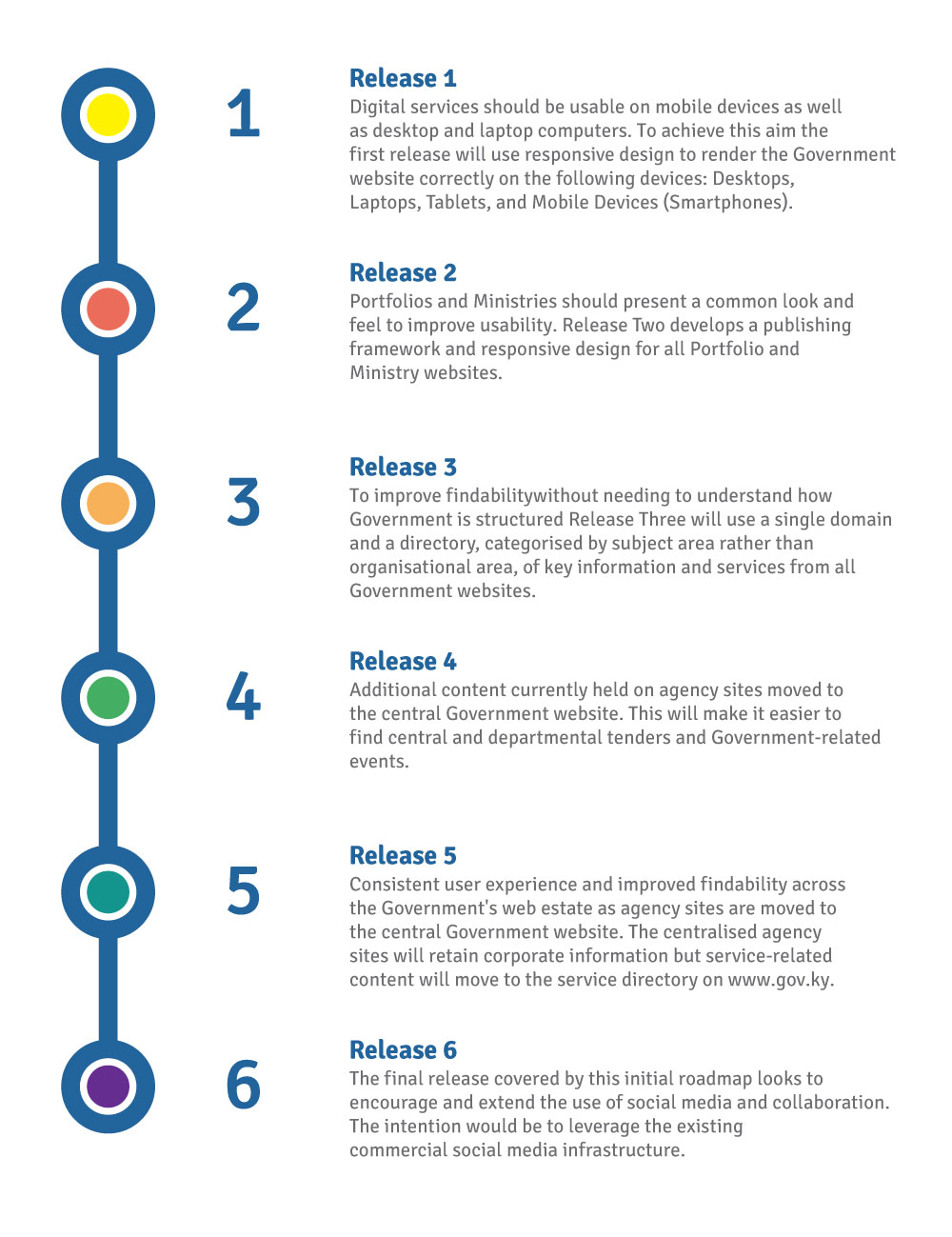Redesigning Cayman Islands Web Estate
In 2012 I was working for the Cayman Islands Government. The Cayman Islands Government (CIG) Web Estate consisted of approximately 80 sites, of which my team had developed and were providing support for about 50%. This portfolio was growing unmanageable and we needed to come up with a new approach.
Legacy Issues

- The biggest gripe we identified from user feedback was how hard it was to find information on Cayman Islands Government websites. When we investigated, we found that often the information had been published somewhere, it was just difficult to find.
- A review of our web analytics also showed that more and more people were trying to access our sites from mobile devices. It was important for us to offer a better experience for the mobile browser.
- Over the years the number of sites managed by the web team had increased – however the actual size of the team was growing smaller. Many sites had had distinct layouts and visual designs. These took time to create. We were not delivering new sites quickly enough, and maintenance of existing sites was very time-consuming.
- Our sites were all built using the Oracle Portal Content Management System – this tool was very nearly obselete, but unfortunately as our whole department ran on Oracle products we knew we had little chance of moving to a different platform. Any new approach would have to be developed on the Oracle Portal platform.
- We also know that there were organisational issues to overcome. the Cayman Islands Government was a pretty conservative organisation and we were pretty sure there would be some resistance to the changes we knew we should make.
- IT services within Cayman Islands Government lacked leadership and strategic focus.
- More and more people coming and asking for an ‘App’ and having only the vaguest idea of what they wanted the app to do.
We needed to come up with a new approach that would allow us to manage our portfolio more effectively.
Requirements
After some discussions within our team we realised that we needed develop a single framework that we could use for all the websites that we managed, and for any new sites we built.
This would cut out time-consuming information architecture and visual design work from our build cycle. We could then deliver sites quicker and cheaper.
The framework needed to be responsive and achievable within the constraints of the Oracle Portal CMS.
After more meetings and discussions within the team, we identified the following critical requirements of our new framework
Consistent Look and Feel – We wanted a modern look and feel that we could apply to all of our sites. It was important to develop a framework that would work equally well for the website of a small unit as well as a large ministry.
Responsive experience – It was important that anyone accessing one of our sites using a mobile device had a good browsing. It was also important for us to be able to deliver a consistent responsive experience with the minimum of effort.
Improved Findability – The framework needed to make it easier for our users to find the information they were looking for.
Policy Document/Briefing Note
We also thought about how best to communicate and influence other stakeholders, such as Heads of Department and other site owners.
We developed a summary document detailing the changes we were planning to make, backed up with research demonstrating the need for these changes.
The document gave us the opportunity to:-
- Give an indication of the modern, clean, flat design direction we were planning to take
- Demonstrate the capabilities of our team to deliver thoughtful and professional work
- Communicate our plan and roadmap

Roadmap

Transfer our own departmental website to new framework A no-brainer for this to be the first as we had complete ownership and could make any changes we saw fit. We could use this site as a testbed for our ideas and then have a fully working site showing the new framework to show to people.
Use framework for high profile clients We wanted to find some good influencers within Government. If we could develop the right sites using our framework it would help convince others that this was the way forward. We were able to get agreement from two major entities withing government:-
- The Office of the Deputy Governor also required a site – we informed them of our plans and sold our new clean design to them. The Deputy Governor was a moderniser, and was also reponsible for the Civil Service.
- Office of the Premier also required a new site – getting two such significant sites on board early on helped win over a lot of other site owners.
Convert sites with low engagement from site owners A number of the sites we managed were not regularly updated or were in dire need of a revamp. We approached these site owners and suggested that we redeisgned their site in accordance with new framework.
Leverage progress to identify more sites to convert Now we were approaching critical mass with over 20 sites reworked to use the new framework, including the Office of the Deputy Governor and Office of the Premier. Now that clients could see the new framework, and how it was working for a number of different clients, we were able to obtain permission to change some more sites.
